The last five days of September were mostly days full of rain. The 28th, however, was clear, cool and dry. With a waning gibbous moon hanging low in the sky at the start of the day, it turned into perhaps the most comfortable day since sometime in May.
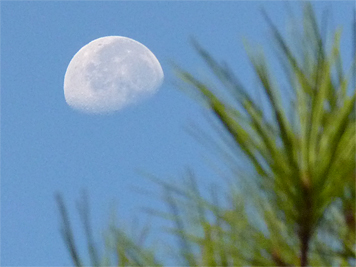
Crownbeard and goldenrod are in bloom.
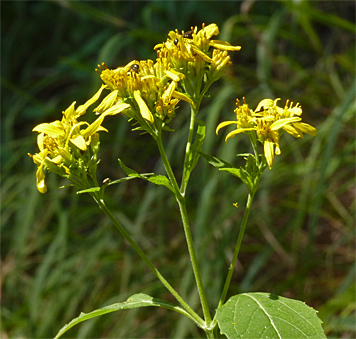
Where there is goldenrod, there are insects.
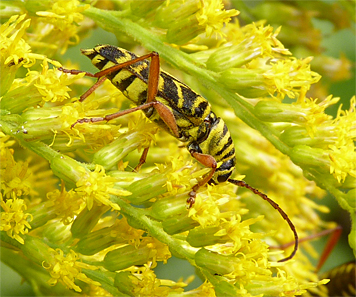
Locust Borers (Megacyllene robiniae) can often be found on goldenrod, especially near stands of Black Locust. In the fall, the adult beetles lay their eggs into Black Locust and the larvae overwinter in the tree’s bark, burrowing into the trunk the following spring.
I found three Locust Borers on the goldenrod that grows on the north side of the Wetlands. I’m sometimes asked what insects do, or where they go, during rainy weather. The three beetles that I found on the goldenrod were still on the goldenrod the following two wet and cool days. They had shut down their activity, and looked less brilliant, but they were still there. It’s not always that easy to find insects on cold, rainy days, but if you do a little searching you may be surprised at what you find.
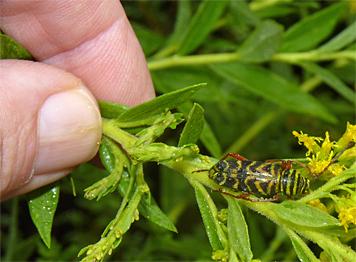
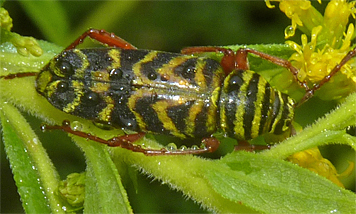
Our native mantid, the Carolina Mantid (Stagmomantis carolina), is a bit smaller than the familiar Chinese Mantid (praying mantis) and its egg case is shaped differently. The females are flightless.
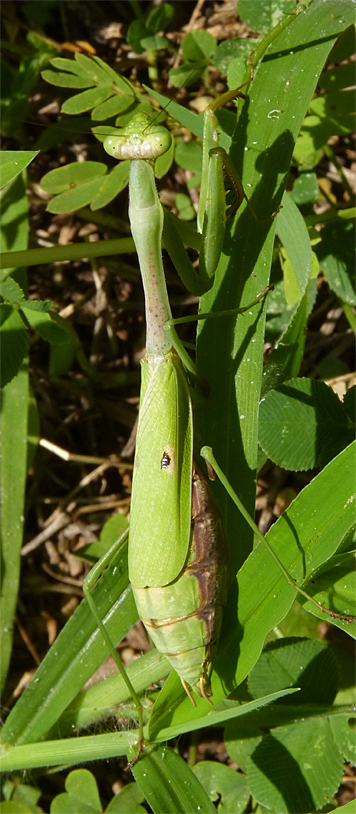
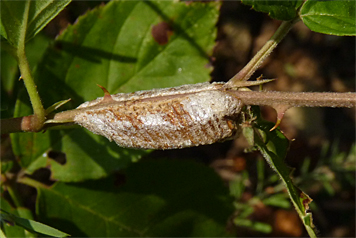
Finally, a grasshopper.
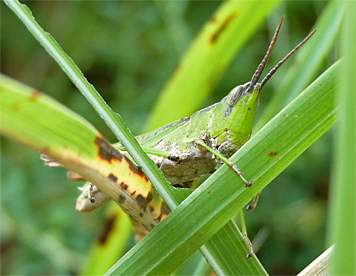
I’m not sure of the identity of the grasshopper in the photo, but it looks to be one of the slantface grasshoppers (Gomphcerinae). Any ideas?
It’s certainly worthwhile to keep your eyes open while walking the trials of the Museum. Whether it’s bright and sunny, or dark and rainy, there’s always something going on.